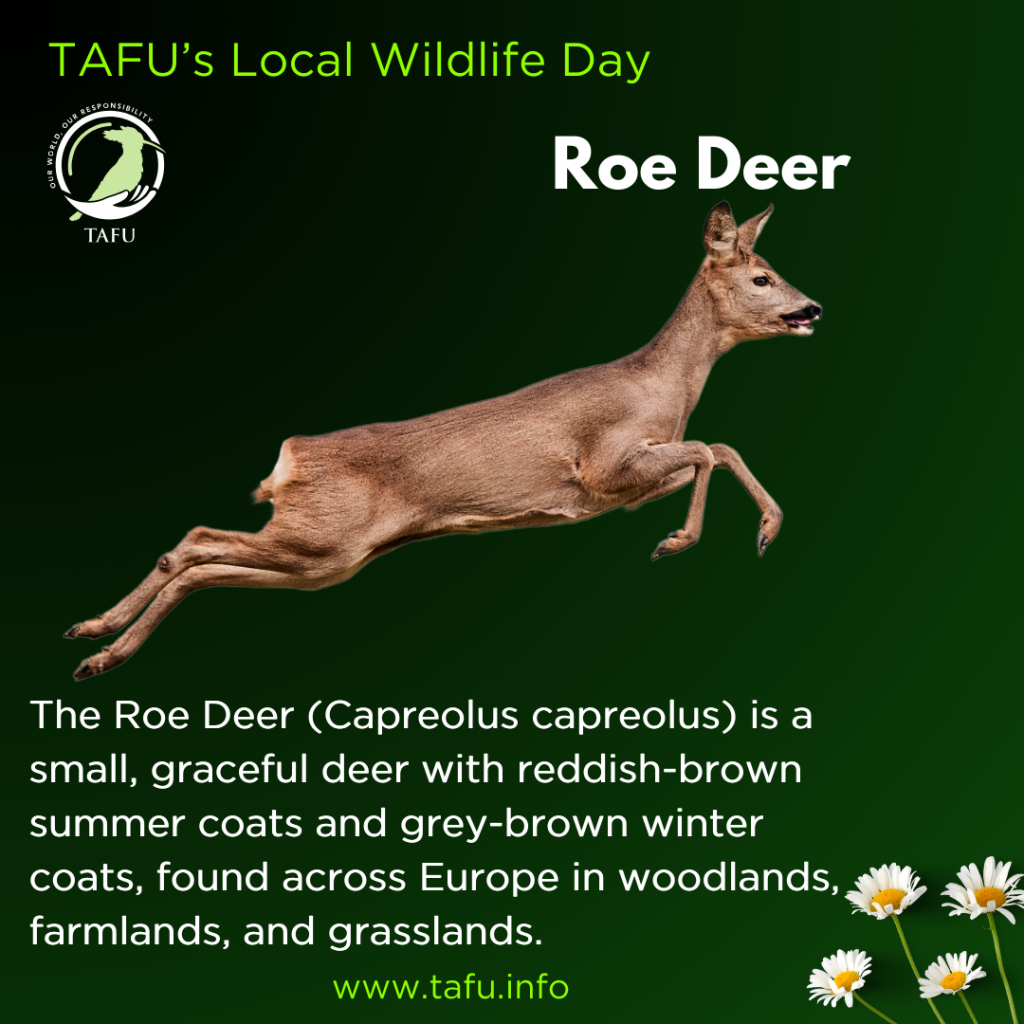Roe Deer
As part of the countdown to TAFU’s Local Wildlife Day on the 11th of July – Species no. 8.
Stay tuned – 35 more days and 35 more species until then!
The Roe Deer (Capreolus capreolus) is a small, graceful species native to the UK and Europe. Adults measure 95-135 cm in length and stand 63-75 cm tall at the shoulder, weighing between 15 and 35 kg. Their coat changes with the seasons: reddish-brown in summer and grey-brown in winter, with a distinctive white rump patch. Males, called bucks, grow short, rough antlers used for display and combat during the breeding season, while females, known as does, and their young, called fawns, do not have antlers.
Roe Deer inhabit a variety of landscapes, including woodlands, farmlands, and grasslands. They are highly adaptable and can thrive in fragmented habitats. Their diet includes leaves, buds, grasses, and agricultural crops. Breeding occurs in summer, with a unique delayed implantation allowing fawns to be born in spring. Fawns are typically born in May or June and are weaned by 2-3 months old.
Roe Deer are generally solitary or live in small family groups, and they are most active at dawn and dusk. They use a variety of vocalisations, including a barking call when alarmed. Despite being common, their populations are monitored due to threats from habitat loss and vehicle collisions, so we should always be extra careful and help their habitat thrive too.

